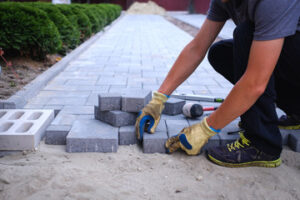The Benefits of Masonry
Whether you’re constructing a new house or renovating an existing structure, Masonry Charleston SC can be an excellent choice. It is very durable and aesthetically pleasing, which makes it a popular material among architects. It is also fire and sound resistant and insulates against daily temperature fluctuations. In the 20th century, masonry was often preferred over wood-stud construction in homes. Cavity walls were often constructed of two layers of masonry, and many foundations were constructed using concrete blocks. In addition, many building codes required the use of masonry for firewalls.
The choice between building with stone or brick depends on several factors. Bricks are cheaper and easier to work with than natural stone. In addition, bricks come in more colors than stone and can mimic their color. Bricks can also be made in various shapes. Besides, bricks are generally easier to install because they are uniform in size. They also make the process go faster.
Bricks are the traditional choice for walls, but the natural stone option is a bit more expensive. Brick and stone are sold by weight, so the natural stone can be more expensive. Also, natural stone requires more support to keep it in place. This, combined with the higher cost, can make it a costly choice.
Stone and brick buildings have long been popular building materials. These materials are weather-resistant and fire-resistant, and both are durable. Despite their differences, both materials have a timeless charm. In fact, they can work well together, resulting in a well-constructed home that is both beautiful and functional. However, the stone is less uniform than brick, so it may not be ideal for some projects.
When building with stone or brick, you need to understand how it is made. Traditionally, bricks were made on-site, with very little equipment. Often, clay excavated for the basement was used to make bricks. The clay is mixed with sand and molded in a wooden box. This is then dried for a few days. Once dry, the bricks are baked in a kiln. Bricks that are close to the fire are too soft and will crack, while bricks that are in the middle of the kiln will be just right. Afterward, the bricks are sorted to determine their quality. Those of the best quality will be used for the front of a building, while bricks that are of poorer quality are used for the sides and interior walls.
Stone walls are usually built with mortar. The mortar between the stones serves as a cushion and holds them together. The mortar shows on the surface and can be shaped in various ways. For instance, thinner joints indicate that the stonework is finer and flatter. In the nineteenth century, stonework was mostly done by hand. The mortar used was often made from lime and sand. Decorative stonework finishes also require extensive handwork.
The deformational properties of masonry are affected by the time under which the material is loaded. This effect is known as creep. The varying mechanical properties of separate layers in masonry determine the creep behavior of the composite unit. In addition, the compressive strength of mortar changes during construction. Therefore, it is important to consider the age of masonry units and mortar when analyzing the creep behavior of masonry.
Another interesting fact about masonry is that it does not rust, dent, or warp. In addition, it does not require deep cleaning, and it has high strength. This makes it ideal for building walls that are exposed to impact and contact. Its other features include design flexibility, varying textures, structural strength, and ease of maintenance. In addition, its cost is competitive with other materials.
Some of the main materials used for masonry construction include brick, stone, and concrete blocks. Some types are load-bearing, while others are designed to support only a small portion of a load. Concrete blocks can have a hollow core, giving them a wide range of uses in masonry construction. These concrete blocks can also be filled with steel to increase their tensile strength or lateral strength. They also add thermal mass to a building.
